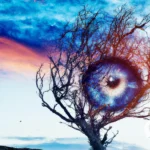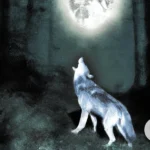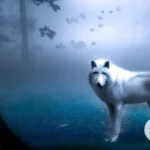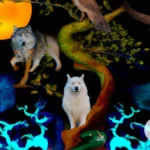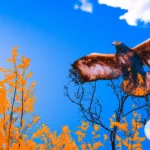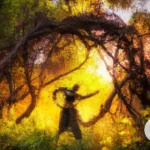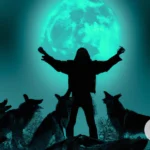The shamanic practices of various ancient cultures continue to fascinate and intrigue people today. One such culture is that of the Norse, whose mythology is filled with shamanic elements. From the concept of the shamanic journey to the significance of animal spirits, Norse mythology is rich in practices and beliefs that are related to shamanism. In this in-depth analysis, we will explore these shamanic elements in Norse mythology, their connection to the Norse cosmology, and how they are relevant to modern times. Let’s delve deeper into the world of Norse shamanism and discover its mysteries.
What is Shamanism?
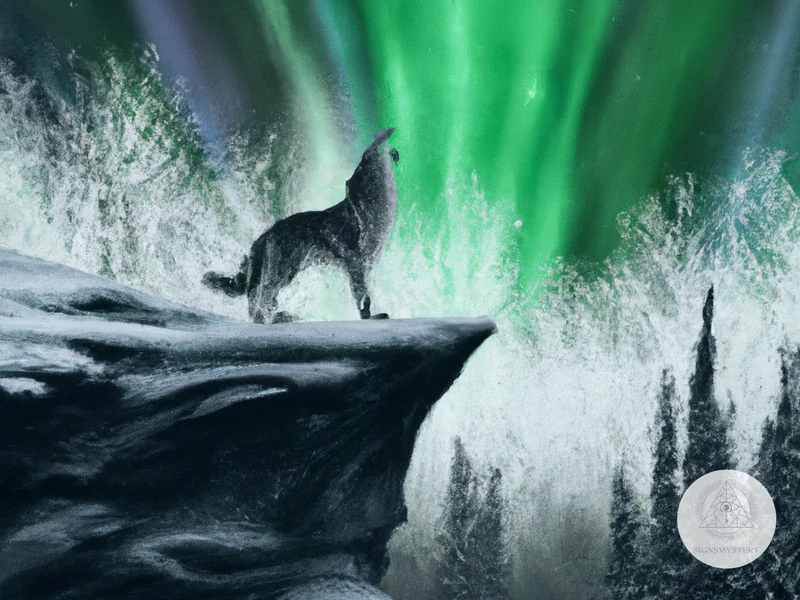
Shamanism is a spiritual practice that dates back centuries and is found in various cultures around the world. Shamanism is based on the belief that there is a spiritual world beyond the physical world, and that the spiritual world can be accessed through meditation, ritual, and various other practices. It’s considered an animistic religion, which means it believes everything in nature has a soul, including animals, plants, and rocks. In shamanic practice, the shaman or the medicine person acts as a mediator between the spiritual realm and the physical world. While the specific beliefs and practices vary among different cultures, shamanism is characterized by its emphasis on the use of altered states of consciousness, such as trance, to communicate with the spirit world. Some examples of shamanism in different cultures include Greek myths and Australian Aboriginal shamanism, as well as native American shamanic legends and Korean shamanism folklore.
Origin and Definition
Shamanism is a spiritual practice that has been around for thousands of years and is found in cultures all over the world. The word “shaman” actually comes from the Tungus tribe in Siberia, where it was used to describe a person who could communicate with the spirit world and work with spirits to heal people. However, this practice is not limited to the Tungus tribe, as similar practices can be found in other cultures, including Native American, South American, African, and Australian Aboriginal cultures.
Definition: Shamanism is a practice where a person (known as a shaman) enters altered states of consciousness in order to interact with the spirit world and channel these spiritual energies to heal people, bring about positive change, and gain wisdom and insight into their lives.
| Core Beliefs | |
|---|---|
| 1. Spirits are real | The practice of shamanism is based on the belief that the spirit world is real and accessible to anyone who knows how to enter the right state of consciousness. These spirits can be allies, teachers, and healers. |
| 2. Everything is connected | Shamanism is built on the idea that everything in the world is connected, and that by working with this web of connections, a shaman can bring about healing and positive change. |
| 3. Illness and disharmony arise from spiritual imbalances | In shamanism, it is believed that illness and disharmony in a person’s life are caused by spiritual imbalances or blockages. By working with the spirit world, a shaman can help restore balance and harmony to a person’s life. |
| 4. Healing is a holistic process | Shamans believe that healing is a holistic process, and that it involves treating the entire person- body, mind, and spirit. This means that they may use a variety of techniques to help someone heal, including physical therapies, herbal remedies, and spiritual practices. |
Shamanism has a long and rich history, and exploring its origins and core beliefs can help us better understand how this practice works and why it is still relevant today. If you’re interested in learning more about shamanism, you may also find our article on fascinating myths of Australian Aboriginal shamanism helpful.
Core Beliefs
Shamanism is rooted in several core beliefs that have been present in various indigenous cultures throughout history. One of the primary beliefs is that everything in the universe is interconnected, including humans, animals, plants, and even inanimate objects. Shamanism emphasizes the importance of respecting and honoring all living beings, as they are all part of the same web of life.
Another core belief in shamanism is the existence of spiritual realms beyond the physical world, where spirits, deities, and other supernatural beings reside. These realms can be accessed through various means, such as shamanic journeying and rituals.
Shamanic traditions also hold that all individuals have access to spiritual power and abilities, referred to as ‘power animals’ or ‘helping spirits’, which are unique to each person. These spirits can provide guidance and support in navigating life’s challenges and fulfilling one’s purpose.
Additionally, shamanic cultures place great importance on healing, both physical and emotional, and believe that the spiritual world plays a crucial role in maintaining overall health and well-being. Shamanic healers work with spirits and other supernatural beings to help individuals overcome illnesses, injuries, and emotional traumas.
The core beliefs of shamanism revolve around the interconnectedness of all things, the existence of otherworldly realms and beings, the unique spiritual power inherent in each individual, and the importance of healing and maintaining balance between the physical and spiritual worlds.
Norse Mythology and Shamanism
Norse Mythology is rich with shamanic elements that reflect the practices of traditional shamanic cultures. The Norse believed in communicating with the spirit world through shamanic practices such as journeying and trance work. The shamanic beliefs of the Norse can be seen in their mythology through the use of animal spirits, the concept of the three worlds, and the shamanic journey itself. Norse shamanism is intricately connected to Norse cosmology, where the three worlds (Asgard, Midgard, and Helheim) and the nine realms play a significant role in their spiritual practices. The shamanic tradition in Norse Mythology emphasizes the importance of connecting with the spiritual realm and the use of animal spirits for guidance and insight. Understanding these shamanic elements can provide a deeper appreciation for the rich cultural heritage of the Norse people.
Shamanic Elements in Mythology
The mythology of the Norse is replete with strong shamanic elements. The concept of the shaman is integral to the mythology, and many of the gods themselves are associated with shamanic practices. One of the most notable examples is Odin, who is known as the god of wisdom, death, and war. Odin’s shamanic journey to gain greater knowledge and wisdom is a key part of Norse mythology. In fact, many of the stories in Norse mythology involve the shamanic journey or some sort of initiation process that is similar to it.
Another key shamanic element in Norse mythology is the concept of transformation. Transformation is essential to the shamanic journey, and it is also a key concept in Norse mythology. Many of the gods and goddesses in Norse mythology are associated with transformation, either because they are able to transform themselves or because they are able to transform others. For example, Freyja, the goddess of fertility, is able to transform herself into a bird, while Loki is able to shape-shift into a variety of different animals.
The use of altered states of consciousness is also a prominent shamanic element in Norse mythology. Many of the stories in Norse mythology involve characters entering altered states of consciousness in order to see visions, receive guidance from the gods, or connect with the spirit world. For example, in the story of “The Mead of Poetry,” Odin drinks the magical mead, which allows him to enter an altered state of consciousness and gain access to the secrets of the universe.
Finally, the shamanic journey is often associated with the concept of the world tree. In Norse mythology, this tree is known as Yggdrasil, and it is said to connect the nine worlds. The tree is also often associated with the shamanic journey, as it is said to be the conduit through which the shaman travels between the different worlds and dimensions. This idea is reflected in the story of Odin’s shamanic journey, which is said to have taken him through the different realms of existence, including the upper world of Asgard, the middle world of Midgard, and the lower world of Helheim.
The shamanic elements of Norse mythology are woven deeply into the fabric of the stories and beliefs of the Norse people. These elements reflect the importance of the shamanic journey and transformation in connecting with the spirit world and gaining wisdom and knowledge. For modern practitioners of shamanism, exploring these shamanic elements of Norse mythology can provide a rich source of inspiration and guidance for their own spiritual practice.
Connection to Norse Cosmology
The connection between shamanism and Norse mythology is deeply rooted in the cosmology of the ancient Viking people. In Norse mythology, the world is divided into three realms: the Upper World, the Middle World, and the Lower World. Each realm is connected by the mythical tree known as Yggdrasil, which is believed to hold the entire world together.
According to Norse cosmology, the Upper World is the realm of the gods, known as Asgard. It is the highest of the worlds, and is inhabited by powerful deities such as Odin, Thor, and Loki. The Middle World is where humans reside, and is known as Midgard. Finally, the Lower World, or Helheim, is the realm of the dead.
Shamanic practices in Norse mythology involve exploring all three realms, with the ultimate goal of gaining knowledge and wisdom from the gods and spirits that inhabit them. By journeying to different realms, the shaman gains insight into the workings of the universe and is able to bring back valuable information to benefit the community.
The connection between shamanism and Norse cosmology is further reinforced by the belief in the Nine Realms, which are interconnected by Yggdrasil. Each of these realms is home to different beings and creatures, and exploring them is an important part of shamanic practice in Norse mythology.
Here is a breakdown of the Nine Realms in Norse mythology:
| Realm | Description |
| — | — |
| Asgard | The realm of the Aesir gods, ruled by Odin and contains Valhalla |
| Midgard | The realm of humans and is home to our world |
| Jotunheim | The realm of the giants |
| Vanaheim | The realm of the Vanir gods |
| Alfheim | The realm of the light elves |
| Svartalfheim | The realm of the dark elves |
| Nidavellir | The realm of the dwarves |
| Muspelheim | The realm of fire and home of the fire giants |
| Niflheim | The realm of ice and home of the primordial being, Ymir |
Exploring these realms and communicating with the beings that inhabit them is an essential part of shamanic practice in Norse mythology. It is through these journeys that the shaman gains insight and wisdom, and is able to use that information to gain a deeper understanding of the universe and help their community. The connection between shamanism and Norse cosmology highlights the importance of spiritual exploration and the pursuit of knowledge in Viking culture.
The Three Worlds of Norse Mythology
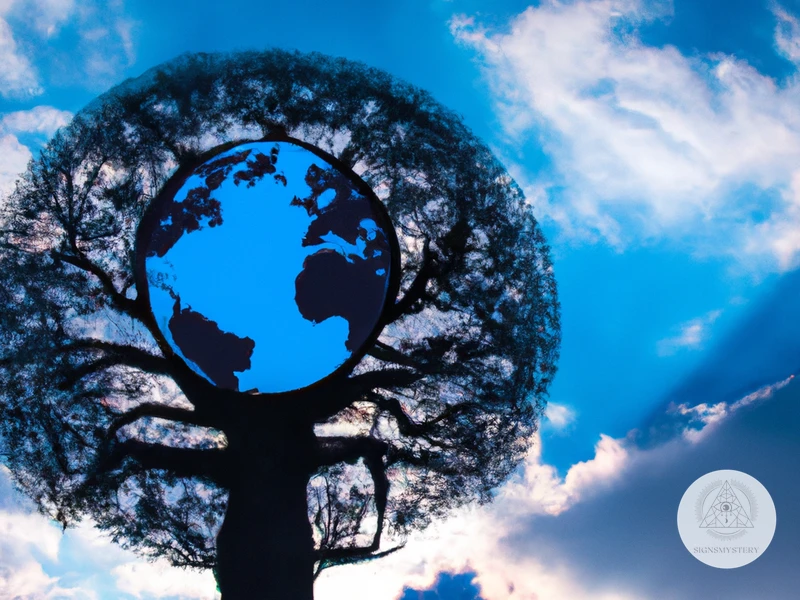
In Norse mythology, there are three distinct worlds that make up the universe: the upper world, the middle world, and the lower world. As Asgard, the upper world is where the gods and goddesses reside, with Yggdrasil – the world tree – serving as their connection to other realms. The middle world, or Midgard, is the realm of humans, where the great tree serves as a meeting place for people and events, and where humans interact with gods, giants, and elves. Finally, Helheim is the world of the dead, ruled by Hel and her cohorts. The Norse cosmology of these three worlds has a significant impact on the mythological tales of the gods, and the shamanic aspects of Norse mythology.
The Upper World: Asgard
The Upper World, known as Asgard, is the realm of the gods in Norse mythology. It is a place of divine power and majesty, where the most important gods reside and where the world tree, Yggdrasil, connects all nine realms.
Asgard is often depicted as a magnificent city with golden palaces and shining halls. The gods and goddesses of Asgard are known for their strength, wisdom, and unique abilities. Below is a table highlighting some of the prominent features and inhabitants of Asgard:
| Feature/Inhabitant | Description |
|---|---|
| Valhalla | A grand hall in Asgard where the bravest of warriors who died in battle are taken by the Valkyries to feast and prepare for Ragnarok. |
| Odin | The All-Father and ruler of Asgard. He is known for his wisdom, magic, and connection to the shamans of Norse mythology. |
| Thor | Son of Odin and god of thunder. He wields the hammer Mjolnir and is seen as a protector of humanity. |
| Heimdall | The watchman and guardian of the gods. He is said to have keen senses and can hear the grass grow and the wool on a sheep’s back. |
| Freyr | The god of fertility, prosperity, and harvest. He is often depicted holding a phallic object, symbolizing his connection to fertility. |
| Sif | The goddess of harvest and fertility, and wife of Thor. She is often depicted with golden hair. |
The gods and goddesses of Asgard play important roles in Norse mythology and are often associated with different aspects of the natural world. As shamans of Norse tradition journey to Asgard, they may encounter these powerful beings and seek guidance and knowledge. Asgard also plays a pivotal role in the eventual fate of the cosmos, as it is where the final battle of Ragnarok will take place.
The Middle World: Midgard
In Norse mythology, Midgard is the realm of mortals and is located between the Asgard and Helheim. It is also known as the Middle World or the world of humans. It is said that the gods created Midgard using the flesh and bones of the giant Ymir. The world is surrounded by an impassable ocean and is connected to Asgard by the rainbow bridge called Bifrost.
Midgard is an essential part of Norse mythology and is the stage on which humans live their lives. The Norse believed that humans were closely connected to their environment, as they depended on nature for survival. In Midgard, people experienced the pain of birth, the hardships of life, and the inevitability of death. Despite this, they also found joy in life, and this balance between joy and pain was believed to be what made life worth living.
The realm of Midgard was not only the home of humans but also of various mythological creatures. Humans shared the Middle World with giants, dwarfs, and some minor deities. The Norse believed that these creatures had a significant impact on their lives and that they could interact with them if they knew how to.
In Norse mythology, there is a clear distinction between the world of the gods, the world of the dead, and the world of the living. The Middle World lies between the other two, and its borders are guarded by powerful creatures such as the great serpent Jormungandr and the giant wolf Fenrir.
Midgard was a vital part of Norse mythology, representing the human experience and the connection between humans and the natural world. It was a place of struggle and balance between pain and joy, and it was believed that understanding and embracing this balance could lead to enlightenment and a deeper understanding of the world and its mysteries.
The Lower World: Helheim
Helheim, also known as Hel, is the lowest of the nine realms in Norse mythology and is known as the realm of the dead. It is ruled by the goddess Hel, who is half living, half dead. The realm is said to be populated by those who did not die in battle and those who died from sickness or old age.
The entrance to Helheim is guarded by a fierce dog named Garm, and those who enter must cross the river Gjoll, which is spanned by the bridge Gjallarbrú. According to Norse mythology, those who do not cross the bridge successfully will fall into the waters below and be swept away to a place called Náströnd, where they are punished for their sins.
Within Helheim, there are many different regions, including Niflheim, which is the realm of mist and darkness. It is said that Niflheim is the birthplace of the great serpent Jörmungandr, who is one of the three children of the god Loki.
In Norse mythology, Helheim is not necessarily a place of punishment, but rather a place where the dead go to live out their afterlife. Those who lived honorable lives are said to be sent to Valhalla or Fólkvangr, while those who did not are sent to Helheim.
Despite being the realm of the dead, Helheim is not without its shamanic elements. It is said that shamans can journey to Helheim to communicate with the dead and gain knowledge from the other side. This journey is not without its dangers, however, as the shaman must face the challenges of the realm and navigate its many different regions and inhabitants.
Helheim is a fascinating realm in Norse mythology that is rich in symbolism and shamanic elements. It offers a unique perspective on the afterlife and the journey of the soul, making it an important part of Norse mythology and shamanic practice.
The Nine Realms of Norse Mythology
The Nine Realms of Norse Mythology are a fascinating and intricate aspect of the Norse cosmology. According to the mythology, these realms are interconnected and exist within the branches of Yggdrasil, the World Tree. Each realm is vastly different from one another and is home to unique beings and creatures. Asgard, the realm of the gods, is located at the top of the World Tree and is connected to the other realms through Bifrost, the rainbow bridge. Midgard is the realm of humans and is located at the center of the World Tree. The remaining realms, such as Jotunheim, the realm of the giants, and Svartalfheim, the realm of the dark elves, are equally important and have their own significant roles to play in Norse mythology. The complexity of the Nine Realms showcases the deep spiritual beliefs of Norse culture and their connection to the natural world.
Asgard: Realm of the Gods
Asgard is one of the nine realms in Norse mythology and it is considered to be the realm of the gods. The ruler of Asgard is Odin, the Allfather, who resides in his magnificent hall, Valhalla.
The following table presents some of the gods and goddesses who reside in Asgard and their noteworthy characteristics:
| God/Goddess | Notable Characteristics |
|---|---|
| Odin | Chief god, god of wisdom, war, and death |
| Thor | God of thunder and strength, protector of humanity |
| Frigg | Goddess of marriage and motherhood, wife of Odin |
| Baldur | God of beauty, purity, and light |
| Heimdall | Guardian of the Rainbow Bridge, able to see and hear all that occurs in the nine realms |
Asgard is portrayed as a fortified city in the sky, with glittering walls and silver gates. The gods have ornate halls and palaces, including Valhalla where warriors who die in battle are taken. In Norse mythology, Asgard is also associated with the concept of fate and destiny. The Norns, three goddesses of fate, reside here and spin the threads of each person’s life.
It is believed that when Ragnarok, the end of the world, comes, Asgard will fall and be destroyed along with the other realms. However, it will be reborn again with a new generation of gods and goddesses who will bring about a new era.
Asgard and its inhabitants have been a source of inspiration for works of art, literature, and modern pop culture. The Marvel Cinematic Universe has popularized many of these characters, making them recognizable beyond just mythology enthusiasts.
Midgard: Realm of the Humans
Midgard is the realm of humans in Norse mythology. It is located in the middle world and is considered to be the most important realm as it is the home of humans and the site of their interactions with gods, giants, and other creatures.
One of the important elements of Midgard is Yggdrasil, the world tree, which is believed to connect all the realms in Norse mythology. The tree symbolizes the interconnectedness of all things in the universe and is a representation of the Norse cosmology. Midgard is located near the roots of Yggdrasil, which is guarded by the serpent Jörmungandr.
According to Norse mythology, Midgard was created by the gods Odin, Hoenir, and Lothur from the remains of Ymir, the giant who was slain at the dawn of creation. Midgard is a realm of order and structure, where humans live and thrive under the protection of the gods.
One of the prominent features of Midgard is the rainbow bridge, known as Bifröst, which connects Midgard to Asgard, the realm of the gods. The gods use Bifröst to travel to Midgard and interfere in human affairs when necessary.
In Norse mythology, Midgard is also the site of the final battle between the gods and the giants, known as Ragnarok. During Ragnarok, Midgard will be destroyed, and the human race will face its doom.
Despite its eventual fate, Midgard is a realm that holds great significance in Norse mythology. It is the realm of humans, where they live, thrive, and interact with other beings in the cosmos. And even in the face of destruction, Midgard remains an important part of the Norse mythos, reminding us of the cyclical nature of life and the vital role humans play in the universe.
Jotunheim: Realm of the Giants
Jotunheim is known as the Realm of the Giants in Norse mythology. Giants are often seen as hostile and chaotic, their actions unpredictable and often in direct opposition to the desires of the gods. But in Jotunheim, they have their own society and customs, separate from the gods and humans of Midgard. Their massive size and strength make them formidable opponents, and the gods often turn to them for help when they require a show of force.
The giant Ymir is said to have been the first living being to emerge in the mythology of the Norse people, born from the melting ice of Niflheim and the seething fire of Muspelheim. His body provided the raw materials for the creation of the world, and his skull was used to form the sky. Some of his descendants still live in Jotunheim, and they are seen as both a threat and an asset to the gods.
Jotunheim itself is vast and varied, with towering mountains and deep valleys. The giants make their homes in caves and fortresses, often carved from the living rock of the earth. Some of them are skilled in magic and sorcery, able to shape the very elements themselves to their will. Despite their reputation as a chaotic force, the giants of Jotunheim have their own code of honor and respect, and their interactions with the gods are often marked by a wary mutual respect.
One of the most famous tales of Jotunheim involves the god Thor and his journeys there, where he often finds himself embroiled in battles with giants intent on destroying him. He also relies on their help in his own battles, and his trusty hammer Mjolnir is said to have been forged by a master giant craftsman. In this way, Thor serves as a bridge between the worlds of gods and giants, bringing together the seemingly irreconcilable forces of order and chaos.
In modern times, the idea of the giants of Jotunheim still holds fascination for many people, and their depiction in popular culture reflects this. From the towering, fearsome creatures in movies and video games, to the more nuanced portrayals in literature and art, Jotunheim and its giant inhabitants continue to capture the imagination of audiences around the world.
Svartalfheim: Realm of the Dark Elves
In Norse mythology, Svartalfheim refers to the realm of the dark elves. These elves were known for their exceptional ability in crafting weapons and jewelry, and they lived in caverns deep below the earth’s surface. They were also called the “black elves” due to their dark complexion and hair.
The dark elves were not to be confused with the light elves who resided in Alfheim. While the light elves were considered benevolent and beautiful, the dark elves were viewed as more malevolent and cunning. Despite this reputation, the elves of Svartalfheim were crucial in Norse mythology for their ability to provide weapons and tools to the gods.
According to Norse cosmology, Svartalfheim was located below Midgard and was closely associated with the element of earth. It was considered to be a challenging and dangerous place to visit since the dark elves were notorious for their trickery and their dislike for outsiders.
Despite the challenges that came with visiting Svartalfheim, it was considered a necessary journey for those seeking to acquire exceptional weaponry or wisdom. This realm was also associated with the Norse god Loki, who was known for his cunning and trickery. Loki was said to have spent a significant amount of time in Svartalfheim, learning from the dark elves and acquiring knowledge that would later serve him well in his dealings with the gods.
In conclusion, Svartalfheim was a realm of the dark elves in Norse mythology, associated with earth and craftsmanship. The dark elves were known for their exceptional crafting skills, but also for their trickery and malice. Despite the risks associated with visiting Svartalfheim, it was considered a necessary journey for those seeking knowledge and exceptional tools, and was closely associated with the Norse god Loki.
Alfheim: Realm of the Light Elves
In Norse mythology, Alfheim is one of the nine realms and is known as the realm of the Light Elves. According to the Prose Edda, Alfheim was given to the god Freyr as a tooth-gift in exchange for his services as a peace negotiator in the war between the Aesir and Vanir.
The Light Elves themselves were considered to be beautiful, peaceful beings, with a strong connection to nature and the elements. They were known for their wisdom and magical abilities, particularly in the fields of healing and protection.
Although Alfheim does not feature prominently in Norse mythology, it is thought to represent the importance of light and beauty in Norse culture, as well as the belief in the power of magic and the natural world.
Here is a table of the key features of Alfheim:
| Realm | Ruler | Inhabitants | Key Features |
|---|---|---|---|
| Alfheim | Freyr | Light Elves | Connection to nature, magical abilities, wisdom, healing, and protection |
Alfheim represents an important aspect of Norse mythology and shamanism, highlighting the connection between nature, magic, and spirituality. It showcases the importance of beauty and light in Norse culture and mythology and serves as a reminder of the power of nature and its healing abilities.
Vanaheim: Realm of the Vanir
Located in the upper regions of the Norse cosmos, Vanaheim is one of the nine worlds of Norse mythology. Revered as the home of the Vanir, the gods of fertility, wisdom, and the sea, Vanaheim is a mystical and magical realm that holds important significance in Norse shamanism.
According to Norse mythology, the Vanir were mysterious and powerful gods that used their magic and divination to shape the world. They were known for their association with earth, water, and fertility, and were believed to be the guardians of all things green and growing. Their close connection to the earth and nature made Vanaheim a symbol of vitality and abundance, and many shamanic practices were thought to involve journeying to this realm to harness its power.
In Norse shamanism, the Vanir were often honored during rituals and ceremonies. They were seen as guardians of fertility and the natural world, and were thought to have the power to grant abundance and prosperity to those who honored them. The Vanir were often associated with the elements of water and earth, and their magic and wisdom were thought to be essential for human beings to live in harmony with the natural world.
Some of the key figures associated with Vanaheim included Frey and Freya, twin gods of fertility and prosperity. Frey was revered for his magical sword, which was said to be able to fight by itself, and for his magical boat, which was capable of traveling across both land and sea. Freya, on the other hand, was a goddess of love, beauty, and fertility. She was known for her powerful magic and her ability to shape destiny and fate.
Many shamanic rituals involving Vanaheim were thought to involve journeying across the nine worlds of Norse mythology. During these rituals, practitioners would journey through all of the realms, connecting with the Vanir and harnessing their power along the way. They would often use symbols and totems to help guide them on their journey, and would invoke the power of the Vanir to help them overcome any obstacles they encountered along the way.
Vanaheim is a fascinating realm that holds a crucial place in Norse shamanism. Its connection to the natural world and fertility makes it an essential part of Norse cosmology, and its magic and divination continue to inspire modern-day practitioners of shamanism around the world.
Nidavellir: Realm of the Dwarves
Nidavellir, also known as Svartalfheim, is the realm of the dwarves in Norse mythology. Dwarves are known for their exceptional craftsmanship and their creation of powerful magical items.
According to Norse mythology, Nidavellir is located underground, beneath Midgard and is home to various underground caverns and tunnels. The dwarves are respected and revered in Norse mythology for their exceptional skills in metalworking and crafting artifacts of great power.
The following are some fascinating facts about the Nidavellir realm:
| The Dwarves of Nidavellir | Information |
|---|---|
| The Creation of Mjölnir | The god Thor’s hammer, Mjölnir, was crafted by the dwarves. |
| The Creation of Draupnir | The dwarves also crafted a golden arm-ring called Draupnir for the god Odin. This ring was magical and produced eight new rings every ninth night. |
| The Creation of Gleipnir | The dwarves also crafted Gleipnir, a magical chain that was unbreakable. This chain was used to bind the fearsome wolf Fenrir. |
The dwarves’ ability to craft powerful magical artifacts makes Nidavellir an essential and respected realm in Norse mythology. Along with their exceptional metalworking skills, the dwarves have also been known to possess immense wealth and precious gems, adding to their importance.
The dwarves, though not considered gods themselves, hold a significant place in Norse mythology due to their exceptional skills. They are known to be reclusive and prefer to live underground away from the chaos of the world above.
Nidavellir, the realm of the dwarves, is a fascinating aspect of Norse mythology that showcases the importance of exceptional craftsmanship and the role it plays in creating legendary weapons and artifacts. The dwarves of Nidavellir are respected and revered in Norse mythology for their skills in crafts like metalworking.
Muspelheim: Realm of Fire
Muspelheim is
Subscribe to Our Newsletter
Sign up to receive the latest news and updates.
The Norse myths state that Muspelheim came into existence at the beginning of creation, from the sparks and embers that were emitted from Niflheim, the realm of ice, when they met in the void. As such, it is believed to be the polar opposite of Niflheim. It is described as the hottest, most volatile and chaotic of all the Nine Realms, and it is feared for its extremes of heat.
While very little is known about Muspelheim, scholars believe that it is closely related to the element of fire that is often associated with shamanism. Fire has been an integral part of many shamanic practices, serving as a source of purification and transformation. Similarly, Muspelheim and its fiery energy may have also been used by Norse shamans for spiritual journeys and transformations.
In Norse mythology, Muspelheim is often associated with the end of the world, known as Ragnarok. It is believed that Surtr, the Fire Giant, will lead an army of fire giants and demons against the gods, and together, they will bring about the destruction of all things. However, from the ashes and flames, a rebirth will occur, and a new world will emerge.
It is important to note that Muspelheim is not just a destructive force, but it is also a source of creation and renewal. Its heat and flames have the power to transform and purify, creating new beginnings out of the ashes of destruction.
Muspelheim is a realm of fire and heat, feared for its extremes of temperature and volatile nature. It is associated with the element of fire in shamanic practices and is believed to have been used by Norse shamans for spiritual journeys and transformations. While often associated with destruction, Muspelheim is also a source of creation and renewal, highlighting the cyclical nature of life and the universe.
Niflheim: Realm of Ice
Niflheim is one of the nine realms in Norse mythology. It is the world of ice and mist, located in the northern region of the cosmos. The name Niflheim translates to “misty world” and it is said to be a cold and dark place, inhabited by giants and undead creatures.
According to Norse mythology, Niflheim was the first of the nine realms to exist. It was created when the fiery realm of Muspelheim and the icy realm of Niflheim collided, creating the great void of Ginnungagap. Within the void, the first being Ymir, a giant made of ice, was formed.
Niflheim is associated with death and the afterlife, and is said to be ruled over by the goddess Hel, also known as the queen of the underworld. Hel is portrayed as half-dead and half-alive, and is the keeper of the dead who have not died in battle and are not welcomed into the afterlife of Valhalla in Asgard.
In Niflheim, there is a well called Hvergelmir, which is the source of all the rivers in the nine realms. The well is said to be guarded by the giant Nidhogg, who gnaws at the roots of the world tree Yggdrasil that binds the nine realms together.
Niflheim in Shamanism
In shamanic practice, the realm of Niflheim can represent the inner landscape of the unconscious mind. It can be seen as a place of darkness, cold, and isolation, where one confronts their fears, doubts, and unresolved emotions.
Shamans may journey to Niflheim to connect with the spirits of the dead, seeking guidance and knowledge from the other side. The well of Hvergelmir can also be seen as a gateway to the underworld, where shamans may communicate with the spirits of the ancestors and gain insight into the mysteries of life and death.
The icy realm of Niflheim is a powerful symbol of the cyclical nature of life, death, and rebirth. It represents the necessity of facing the shadow self in order to grow and transform. By exploring the realm of Niflheim through shamanic practice, one can gain a deeper understanding of the mysteries of the human psyche and the journey of the soul.
| Key Features of Niflheim | Associated Concepts and Symbols |
|---|---|
| World of ice and mist | Death and the afterlife |
| Birthplace of Ymir | The unconscious mind |
| Guarded by Nidhogg | Fear and isolation |
| Well of Hvergelmir | Gateway to the underworld |
| Ruled by Hel | Mystery and transformation |
The Shamanic Journey in Norse Tradition
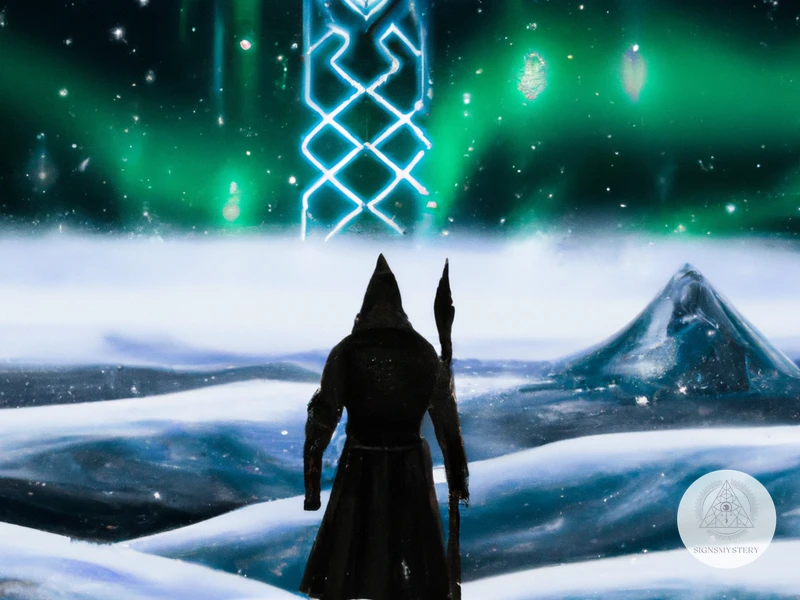
In Norse tradition, the shamanic journey is a powerful method for connecting with the nine realms of the universe. To undertake this journey, the shaman uses various techniques and practices, including chanting, drumming, and meditation. The journey may begin with the shaman envisioning a tree, known as Yggdrasil, which connects the nine realms. The shaman then travels through these realms, encountering various entities and spirits. To aid in their journey, the shaman may call upon the guidance and protection of animal spirits, known as fylgjur. The shamanic journey allows for a deeper understanding of the interconnectedness of all things, and can lead to profound personal transformation and spiritual growth.
How to Connect with the Nine Realms
Connecting with the nine realms of Norse mythology is a fundamental aspect of shamanic practice. The realm of humans, Midgard, is where most individuals reside, but there are eight other realms that can also be accessed during shamanic journeys. To connect with the nine realms, one must first understand that these realms are not physical places but rather metaphysical planes of existence.
To begin the journey, find a quiet and comfortable place to sit or lie down where you will not be disturbed. Begin by focusing on your breathing, taking deep breaths in through your nose and out through your mouth. As you relax, envision yourself standing at the foot of the World Tree, Yggdrasil.
Focus on visualizing each realm, one at a time, starting with Asgard, the realm of the gods. It is often represented as a shining city in the clouds, with shimmering gold gates that are guarded by the god Heimdall. Visualize the city, the buildings, and the inhabitants.
Next, move on to Vanaheim, the realm of the Vanir, which is sometimes referred to as the realm of fertility. This realm is associated with natural cycles of birth and growth. Visualize yourself walking through fields of flowers or along the banks of a freshwater river.
Then, move on to Alfheim, the realm of the light elves, which is known for its ethereal beauty. This realm is often portrayed as a land of perpetual sunlight, where the light reflects off the clear waters of a river. Imagine walking through the forest with the shimmering light at your back.
On to Jotunheim, the realm of the giants, which is known for its rugged terrain. This realm is often portrayed as a barren and inhospitable place. Visualize yourself traversing through the terrain, encountering giants along the way.
Next, move on to Svartalfheim, the realm of the dark elves. This realm is often portrayed as a place of darkness and shadows. Imagine yourself walking through the twisting tunnels and caverns underneath the earth.
Then, explore Nidavellir, the realm of the dwarves, which is associated with metallurgy and craftsmanship. Visualize the halls and forges, as well as the dwarves themselves.
Now, move on to Muspelheim, the realm of fire. This realm is often portrayed as a place of intense heat and flames. Picture yourself walking across lava fields and feeling the heat on your skin.
Finally, visit Niflheim, the realm of ice. This realm is often portrayed as a place of bitter cold and darkness. Imagine walking through a frozen wasteland, feeling the chill in your bones.
To return from the journey, visualize yourself returning to the foot of Yggdrasil and then back to your own body. Take a few deep breaths and slowly open your eyes. Reflect on your experience and any insights gained from your journey.
Connecting with the nine realms can be a powerful tool for self-discovery and spiritual growth. Through shamanic journeying, one can gain insight into their own psyche and the wider world around them. By exploring the realms of Norse mythology, one can gain a deeper appreciation for the interconnectedness of all things.
Techniques and Practices for Journeying
Journeying is the practice of entering a trance or altered state of consciousness in order to connect with the spirit world. In Norse shamanism, journeying is used as a means of communicating with the gods, ancestors, and animal spirits. Here are some techniques and practices for journeying:
- Visualization: Visualization is the art of creating a mental image or scenario. In journeying, visualization is used to create a specific destination or landscape in the spirit world. The journeyer must focus intently on the visualization in order to enter the altered state of consciousness.
- Rattling: Rattling is a technique used by many shamanic traditions to induce a trance state. In Norse shamanism, a rattle made from reindeer hooves is often used. The journeyer holds the rattle and shakes it rhythmically to help induce the altered state of consciousness.
- Drumming: Drumming is another technique used to induce a trance state. In Norse shamanism, a drum made from reindeer skin or horsehide is often used. The journeyer listens to the beat of the drum and allows it to guide them into the altered state of consciousness.
- Dancing: Dancing is a powerful way to connect with the spirit world. In Norse shamanism, traditional dances such as the Seidr dance are used to induce an altered state of consciousness and connect with the gods and spirits.
- Meditation: Meditation is the practice of focusing the mind on a particular object or thought. In journeying, meditation is used to quiet the mind and create a receptive state for receiving messages from the spirit world.
These techniques and practices are powerful tools for connecting with the spirit world and exploring the shamanic elements of Norse mythology. It is important to remember that journeying should always be approached with intention and respect, and that the journeyer must always be grounded and centered before and after the journey.
Animal Spirits in Norse Mythology
Animal spirits play a significant role in Norse mythology and shamanism. They are often seen as guides or messengers in the shamanic journey and are believed to embody certain qualities and characteristics that can be harnessed by the practitioner. Animals such as the wolf, bear, eagle, and serpent are frequently depicted in Norse mythology and are associated with specific gods and goddesses. For example, the wolf is closely tied to the god Odin and is seen as a symbol of wisdom, cunning, and ferocity. The bear, on the other hand, is associated with the goddess Freyja and is seen as a symbol of strength, protection, and healing. Understanding the symbolism and significance of animal spirits in Norse shamanism can provide practitioners with valuable insights and guidance on their spiritual path.
Examples of animal symbolism in Norse mythology:
- The wolf: wisdom, cunning, ferocity (associated with Odin)
- The bear: strength, protection, healing (associated with Freyja)
- The eagle: freedom, courage, power (associated with Odin)
- The serpent: transformation, rebirth, renewal (associated with Loki)
- The boar: fertility, abundance, courage (associated with Freyja)
Importance of Animal Spirits in Shamanism
The Importance of Animal Spirits in Shamanism
Animal spirits play a crucial role in shamanism, serving as powerful guides and allies for shamans on their spiritual journeys. In many indigenous traditions, animal spirits are believed to hold some of the deepest wisdom and knowledge of the natural world, and by connecting with them, shamans can tap into this wisdom to gain insight, healing, and support.
There are many reasons why animal spirits are so important in shamanism:
| Reasons | Explanation |
|---|---|
| Power and Strength | Animals are often associated with strength, power, and primal instincts. By connecting with animal spirits, shamans can tap into these qualities and use them to overcome obstacles and challenges on their journey. |
| Guidance and Support | Animal spirits can serve as guides and helpers on a shamanic journey, illuminating the way and offering support and protection. They can also provide insight into specific challenges or questions that the shaman may be facing. |
| Connection to the Natural World | Animals are an integral part of the natural world, and by connecting with their spirits, shamans can deepen their relationship and understanding of nature. This connection can inspire greater reverence and respect for the earth and its inhabitants. |
| Symbolism and Meaning | Each animal has its own unique symbolism and meaning, which can offer rich insights and teachings when explored in the context of a shamanic journey. For example, the eagle is often associated with spiritual illumination and the ability to see from a higher perspective. |
| Healing and Transformation | Animal spirits can also offer healing and transformation on a spiritual and emotional level. By working with the qualities and energies of a specific animal, a shaman can facilitate healing and personal growth. |
Animal spirits are a vital component of shamanic practice, offering a bridge between the physical and spiritual worlds and providing a rich source of insight, guidance, and healing. Their importance can be seen in shamanic traditions from around the world, including Norse mythology, where animal spirits play a significant role in the spiritual journeys of heroes and shamans alike.
Animal Spirits in Norse Mythology
Animal spirits played an important role in Norse mythology and shamanism. The ancient Norse people believed that every animal had a spirit and that these spirits held the key to greater understanding of the natural world. In Norse tradition, the animal was seen as a sacred animal, a totem or a spirit guide that represented a person’s connection to the divine realms.
Importance of Animal Spirits in Shamanism
In shamanic traditions, animals were seen as powerful teachers and allies. Shamans believed that animals possessed certain attributes and qualities that could help individuals on their spiritual journey. They acted as intermediaries between the human and spirit worlds and helped to bridge the gap between the two.
In Norse mythology, animals were closely associated with the gods and were often featured in tales of their adventures. Some of the most common animals in Norse mythology include the wolf, serpent, eagle, bear, and horse. Each of these animals is associated with a particular god or goddess and possesses unique qualities and characteristics.
For example, the wolf was the symbol of the god Odin and was seen as a fierce and powerful animal. The serpent was associated with the goddess Hel and represented renewal and rebirth. The eagle was the symbol of the god Thor and was seen as a symbol of strength and power. The bear was associated with the goddess Freya and was seen as a symbol of protection and fertility. The horse was associated with the god Odin and was seen as a symbol of wisdom and spiritual power.
Animal Symbolism in Norse Mythology
In addition to their associations with specific gods and goddesses, animals in Norse mythology were also used as symbols to represent various concepts and ideas. The wolf, for example, was often used as a symbol of chaos and destruction, while the serpent was used as a symbol of renewal and transformation.
Other animals, such as the horse and the eagle, were associated with spiritual power and were often used to represent the ability to travel between the different realms of existence. These animals were often depicted with wings or as riders on horseback, symbolizing the spiritual journey and the ability to transcend physical limitations.
Conclusion
Animal spirits are an important part of Norse mythology and shamanic tradition. They represent a person’s connection to the natural world and act as powerful allies and teachers on the spiritual journey. By understanding the symbolism and meaning behind these animals, individuals can gain greater insight into their own spiritual path and connect more deeply with the divine realms.
Animal Symbolism in Norse Mythology
Animal symbolism played a significant role in Norse mythology, serving as a representation of traits and qualities that were important to the culture. Here are some examples of the animal symbols and their meanings in Norse mythology:
Animal Symbol | Meaning
— | —
Wolf | Power, strength, and cunning
Raven | Wisdom, knowledge, and mystery
Bear | Warrior spirit, ferocity, and protection
Deer | Swiftness, agility, and sensitivity
Horse | Freedom, travel, and companionship
Dragon | Protection, treasure, and transformation
Serpent | Renewal, healing, and vitality
The wolf was a powerful symbol of strength, as evidenced by the Norse deity Fenrir, who was known for his size and power. The raven, associated with the god Odin, was revered for its wisdom and intelligence. The bear symbolized the spirit of the warrior, while the deer represented the grace and agility of the natural world. The horse was considered a companion of the gods and symbolized freedom and travel. The dragon, despite being a creature of myth, was believed to guard treasures and was often associated with transformation. Finally, the serpent represented renewal, healing, and vitality.
These animal symbols were often used in Norse art and poetry, as they held great significance in the culture. They were also used in shamanic practices, where individuals would connect with these animal spirits in order to gain their unique qualities and traits.
In modern times, the use of animal symbols in Norse mythology has continued to hold relevance and significance. Many people turn to these symbols as a way to connect with their own inner qualities and to deepen their spiritual practice. Whether you are trying to embody the strength of the wolf or the wisdom of the raven, the animal symbols of Norse mythology can serve as powerful guides and companions on your journey.
Conclusion
The exploration of shamanic elements in Norse mythology reveals a rich and complex tradition that incorporates spiritual beliefs and practices from indigenous cultures. This analysis has delved into the origins and core beliefs of shamanism, as well as its connection to Norse cosmology and mythology. The three worlds and nine realms of Norse mythology provide a framework for shamanic journeying and connecting with animal spirits. The significance of animal spirits in Norse mythology and their symbolism illustrate the importance of animals in shamanic practices. Ultimately, the relevance and significance of Norse shamanism in modern times is a subject for further study and contemplation. The shamanic elements in Norse mythology serve as a reminder of the ancient wisdom and spiritual practices that continue to inspire and inform our understanding of the world around us.
Summary of Shamanic Elements in Norse Mythology
After exploring the shamanic elements in Norse mythology and the shamanic journey in Norse tradition, it becomes clear that there are several key aspects that define this practice. The shamanic elements in Norse mythology include:
1. The existence of a three-tiered cosmology – the Upper, Middle, and Lower Worlds – which can be accessed through shamanic journeying.
2. The belief in the interconnectedness of all living beings and the ability to communicate with the spirits of animals and nature.
3. The use of personal ritual and sacrifices as a means of entering into a state of trance and communicating with the spirits.
4. The relationship between the gods and shamans in Norse mythology, as well as the shamans’ ability to connect with and channel the power of the gods.
5. The use of ecstatic dance, drumming, chanting, and other techniques to induce an altered state of consciousness and connect with the spirit realm.
Norse shamanism is a rich and complex practice that has had a significant influence on the mythology and culture of the region. Through an understanding of these shamanic elements, we can better appreciate the depth and richness of Norse mythology and gain insight into the spiritual practices of our ancestors.
The Relevance and Significance of Norse Shamanism in Modern Times
The relevance and significance of Norse shamanism in modern times cannot be understated. It offers a unique perspective on spirituality and can provide individuals with a deep understanding of themselves and the world they live in. Let’s take a closer look at some of the reasons why Norse shamanism is still relevant and significant today:
- Cultural Preservation: For individuals of Scandinavian descent, practicing Norse shamanism can help preserve their cultural heritage. By practicing their ancestral traditions, they can connect with their roots and keep their cultural identity alive.
- Connection to Nature: Norse shamanism is deeply rooted in nature and teaches individuals to honor and respect the earth. In a world where environmental destruction is rampant, this connection to nature is more important than ever before.
- Personal Growth: Shamanic practices can help individuals achieve personal growth and self-discovery. By connecting with the nine realms and animal spirits, individuals can gain insights into their own psyche and develop a deeper understanding of themselves and their place in the world.
- Healing: Shamanic practices have been used for centuries as a form of healing. By connecting with the spiritual world, individuals can heal emotional and physical wounds and achieve balance and harmony in their lives.
- Expanded Consciousness: In a world that often feels restrictive, shamanic practices can help expand consciousness and provide individuals with a sense of freedom. By journeying to the nine realms, individuals can open their minds to new possibilities and ways of thinking.
The relevance and significance of Norse shamanism in modern times lies in its ability to provide individuals with a unique spiritual experience that honors nature, promotes personal growth and healing, and expands consciousness. It offers a valuable alternative to mainstream religions and can help individuals find meaning and purpose in their lives.
Frequently Asked Questions
What is the relevance of exploring shamanic elements in Norse mythology?
Exploring shamanic elements in Norse mythology can provide insights into the ancient worldview and culture of the Norse people, as well as a deeper understanding of spiritual practices and nature-based beliefs.
What distinguishes shamanism from other belief systems?
Shamanism is characterized by the belief that practicing rituals, communicating with spirits, and entering altered states of consciousness can heal individuals or communities.
What is the role of animals in Norse shamanism?
Animals are believed to be powerful spirit guides in Norse shamanism. They can provide wisdom, protection, and guidance during the shamanic journey.
How do Norse myths incorporate shamanic elements?
Norse myths often feature shamanic journeys, animal spirits, and world trees, all of which are common features in shamanic traditions around the world.
What is the significance of the three worlds in Norse mythology?
The three worlds in Norse mythology represent different levels of reality and consciousness. By exploring each world, the shaman can gain a deeper understanding of the mysteries of existence.
What is the importance of connecting with the Nine Realms in Norse shamanism?
Connecting with the Nine Realms allows the shaman to access different types of energy and knowledge, and to build a deeper relationship with the natural world and its inhabitants.
What are some practical techniques for journeying in Norse shamanism?
Techniques for journeying in Norse shamanism include drumming, chanting, visualization, and guided meditation.
What are some common animal spirits in Norse mythology?
Common animal spirits in Norse mythology include wolves, ravens, eagles, snakes, and bears, each with their own unique symbolism and significance.
How can shamanism be relevant in modern times?
Shamanism can provide a framework for reconnecting with nature, healing trauma, and developing a deeper appreciation for the interconnectedness of all life.
Is it possible to incorporate Norse shamanism into modern spiritual practices?
Yes, many people today draw inspiration from Norse shamanism and incorporate its practices and beliefs into their own spiritual paths.



